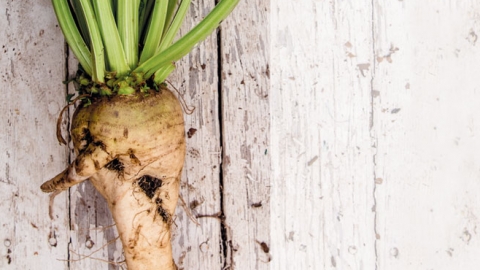Beet Basics
When we think of beets, we tend to think of the root. But it’s the beet’s greens that give away their botanical family, Chenopodiaceae, whose members include spinach, Swiss chard and quinoa. As varieties of the species Beta vulgaris, all beets are the same, from a botanical perspective.
But that doesn’t mean you can make granulated sugar from the familiar purple table beet. Or that you’d want to eat a salad of sugar beets dressed in a balsamic glaze.
Each of these varieties has been selectively bred over centuries to emphasize different traits: Sugar beets for their large size, neutral flavor, and a high sucrose content that can reach 20%, and “table beets” for their color and flavor. They also typically have a much lower sugar content, 12% or less.











